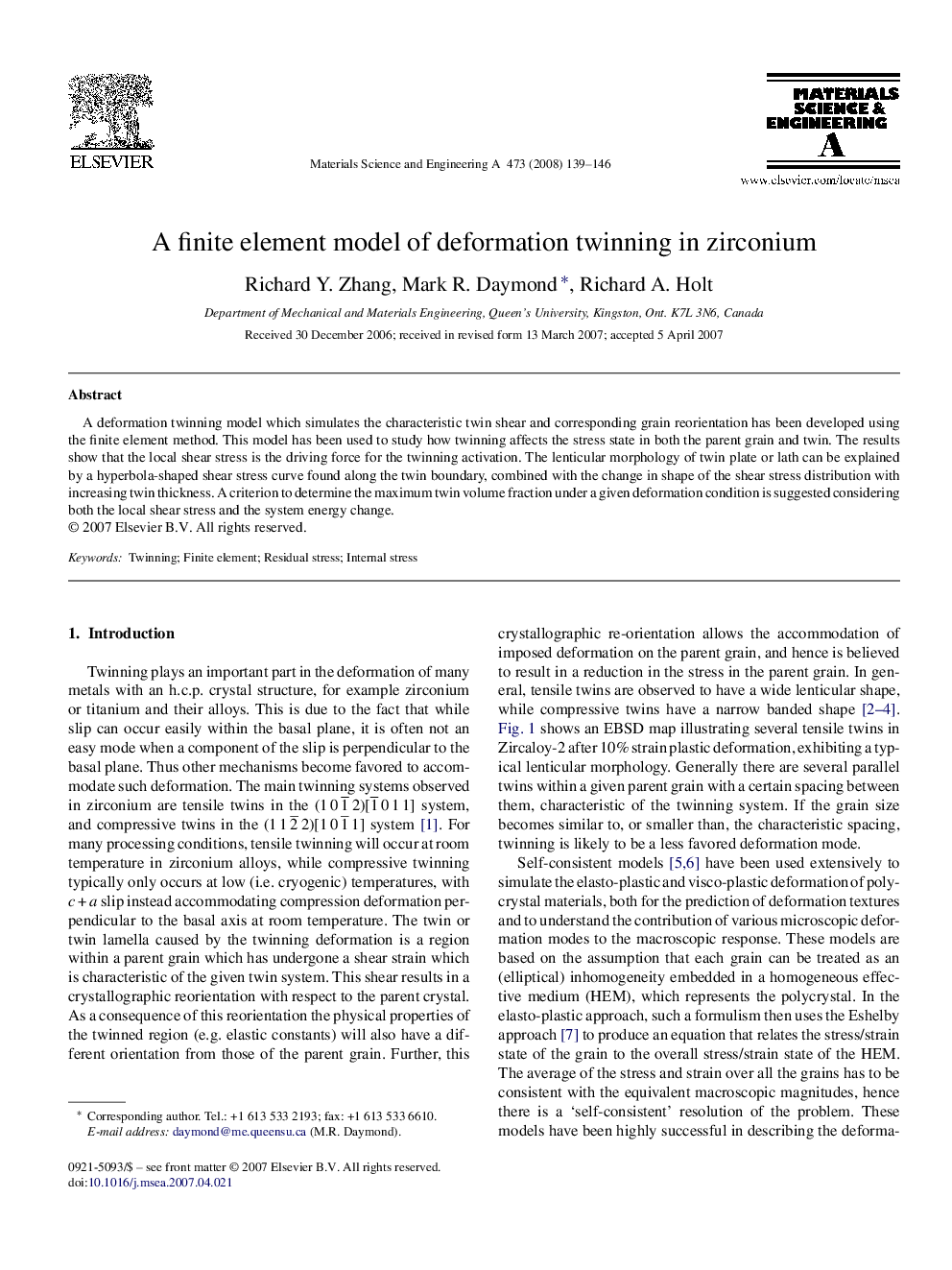| Article ID | Journal | Published Year | Pages | File Type |
|---|---|---|---|---|
| 1583238 | Materials Science and Engineering: A | 2008 | 8 Pages |
A deformation twinning model which simulates the characteristic twin shear and corresponding grain reorientation has been developed using the finite element method. This model has been used to study how twinning affects the stress state in both the parent grain and twin. The results show that the local shear stress is the driving force for the twinning activation. The lenticular morphology of twin plate or lath can be explained by a hyperbola-shaped shear stress curve found along the twin boundary, combined with the change in shape of the shear stress distribution with increasing twin thickness. A criterion to determine the maximum twin volume fraction under a given deformation condition is suggested considering both the local shear stress and the system energy change.
